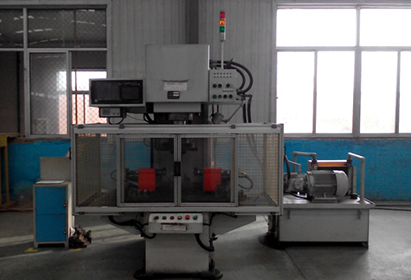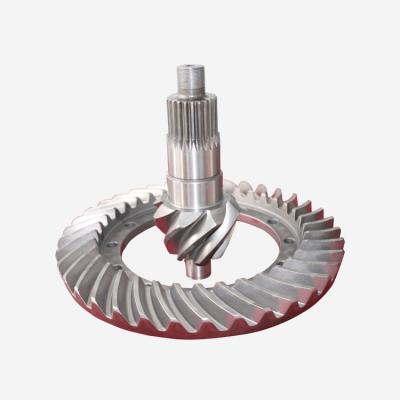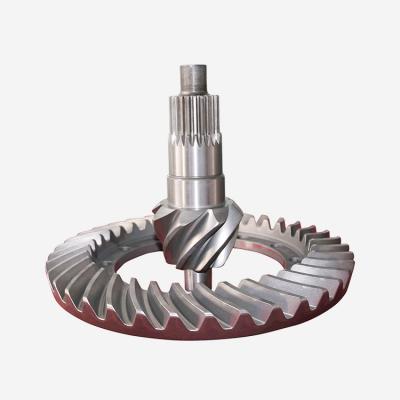Quality inspection of driving and driven bevel gears
The quality inspection of the main driven bevel gear is mainly the inspection of full-time inspectors, combined with the self-inspection and mutual inspection of operators.
1. Appearance inspection
After the driving bevel gear is heat treated, there will always be changes and defects in appearance. Appearance inspection mainly includes: remaining defects, surface damage, surface corrosion, surface oxidation, etc.
(1) Defects such as forging folds and scars of the tooth blank are characterized by rough surface, traces of oxidation, and obvious decarburization layer in cross-sectional observation. During the machining process, it is easy to observe the cleaning process and plate loading process of heat treatment.
(2) Machining defects During the cutting process, a knife appears, causing local damage to the surface. Sometimes processes are lost, such as: less chamfering, drilling, etc.
The most common surface damage is bumping, loading and unloading before and after the heat treatment process, collision, friction, impact, etc. between the vehicle and the spreader.
(4) The tooth blank with surface corrosion stays in the heat treatment workshop and does not enter the furnace in time. Corrosion can occur on the surface of the driving bevel gear, forming speckled pits or pinholes. Light ones will destroy the roughness of the surface of the driving gear, and heavy ones will scrap the gears. Reasonably schedule production and try to avoid parts staying for a long time after cleaning.
(5) During the heating process of heat treatment, the surface oxidizes the driving and driven bevel gears and the furnace gas itches, forming loose oxide scales, destroying the surface roughness of the driving and driven bevel gears, reducing the shape and size of the gears, and affecting the surface hardness.
2. Hardness test
Hardness is an important indicator of the mechanical properties of metals and alloys. It is often used as the main basis for selecting materials in workpiece design and determining the process flow. It is an important means to identify the quality of heat treatment processes.
Hardness testing, currently commonly used heat treatment hardness tester: Rockwell hardness tester, Brinell hardness tester and Vickers hardness tester. The Rockwell hardness tester is mainly used to detect the hardness of the gear after carburizing, quenching and tempering and the core hardness of the test block. Brinell hardness is used to test materials below 450HRS, such as hardness inspection after precision forging side gear spheroidizing annealing. In order to ensure the stability of the test value of the hardness tester, the standard hardness block should be checked frequently, and the measurement department must pass the test every year before it can be used.

- In the previous : The adjustment problem of the meshing mark of the main drive and driven bevel gear of the main reducer
- The next article : What are the supporting forms of the driving bevel gear of the final drive? Each has its own characteristics? What is the difference between a two-speed final drive and a two-stage final drive?



